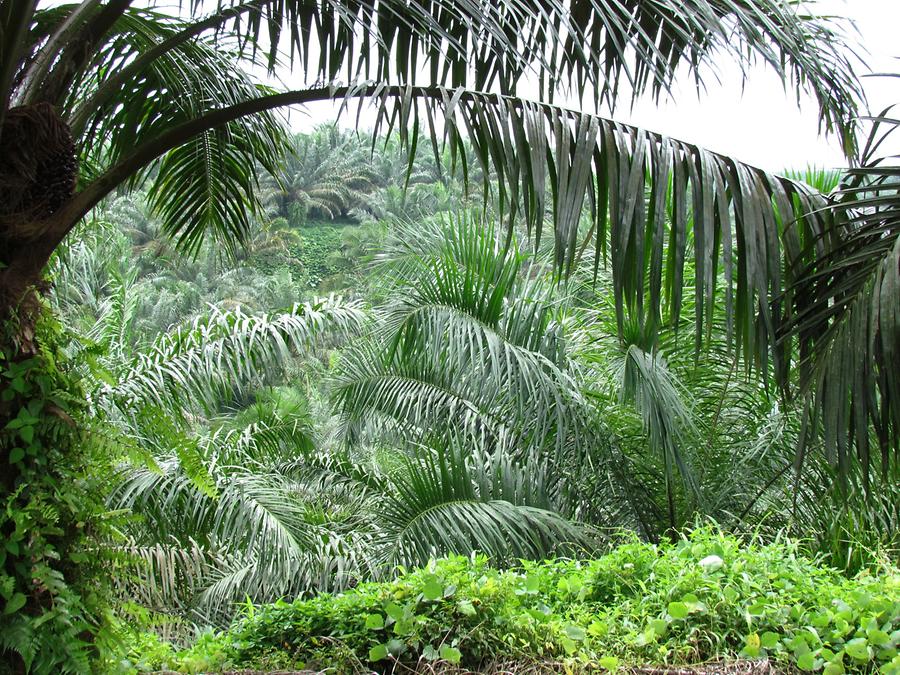Palm Oil Plantation#

Palm Oil Plantation, June 2014, © Stefanie Gölles, under CC BY 4.0
Indonesia is one of the main producer countries for palm oil with a global market share of 44%. In order to clear space for new palm oil plantations, large areas of rainforest are constantly being destroyed by slash-and-burn, for example on Sumatra in 2014.
Palm oil is increasingly sought after as a cheap raw product for the production of biofuel, candles and detergents, but is also used in the industrial production of food, whereby - among other things - Glycidol accrues during the processing, which has mutagenetic and carcinogenic properties.
Indonesien ist eines der wichtigsten Produktionsländer für Palmöl mit einem Weltmarktanteil von 44%. Um für neue Palmölplantagen Platz zu schaffen, werden immer wieder große Flächen Regenwaldes durch Brandrodung für immer vernichtet, wie z. B. auf Sumatra im Jahre 2014.
Palmöl ist als billiges Rohprodukt für die Herstellung von Biokraftstoffen, Kerzen und Waschmitteln immer stärker begehrt, wird aber auch bei der industriellen Herstellung von Lebensmitteln verwendet, wobei durch die Verarbeitung in raffiniertem Palmöl u.a. Glycidol entsteht, das Erbgut verändernde und Krebs erzeugende Eigenschaften besitzt.